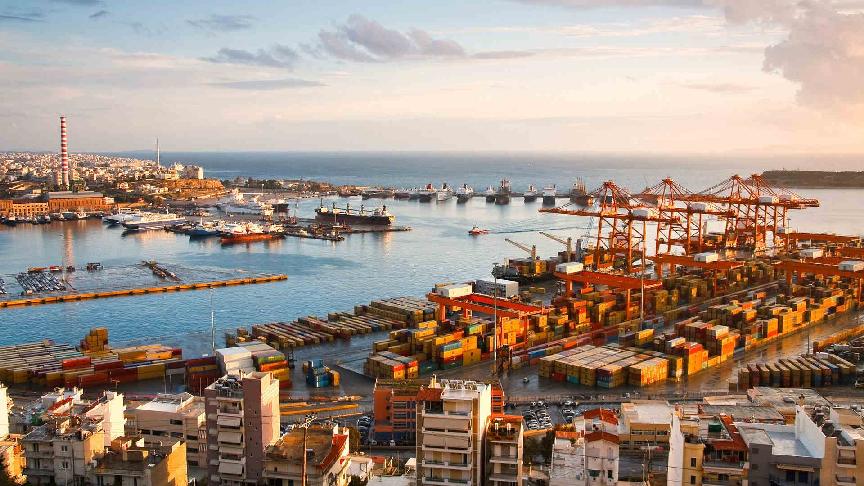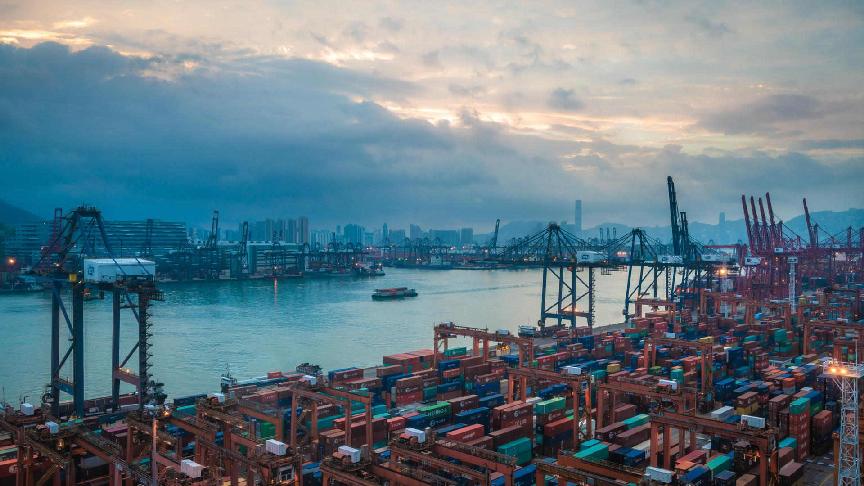26 February 2024 (Lloyd's List) - THE reopening of Ukraine’s greater Odesa seaports has proven to be a decisive step towards restoring a key maritime trade route, but maritime traffic volumes are still more than 50% down on pre-war levels, according to analysis of Lloyd’s List Intelligence data.
In August, after Russia withdrew from the United Nations-backed Black Sea Initiative, Ukraine’s armed forces proposed a temporary Black Sea corridor to enable the departure of merchant vessels still trapped in the greater Odesa region since Russia’s invasion.
In September, vessels started quietly arriving at Ukraine’s seaports, marking the first time since the start of the war that Ukraine was operating these ports without any oversight and outside of international agreements.
Since then, some 800* cargo-carrying vessels have called at either Odesa, Chornomorsk or Yuzhnyi, according to Lloyd’s List Intelligence vessel-tracking data.
Ukraine’s ministry of infrastructure says some 26m tonnes has been exported from the greater Odesa ports via the new corridor.
Ukraine’s Black Sea corridor, which sees vessels hugging the coastlines of Bulgaria and Romania to reach its ports, surpassed the effectiveness of the Black Sea Initiative in December.
Still, the reopening of three ports is not enough to replace the capacity that has been lost.
Mykolaiv and Kherson, which accounted for 13% of arrivals in terms of dwt in 2021, remain closed.
Non-domestic arrivals to Ukraine in December and January, as measured by sum of dwt, were around 50% less than the same period in 2021/2022.
This includes trade out of Ukraine’s smaller Danube river ports.
Focusing just on the greater Odesa ports, arrivals to Chornomorsk, Odesa and Yuzhnyi are down approximately 35% on pre-war levels.
Yörük Işık, a geopolitical analyst from the Istanbul-based consultancy Bosphorus Observer, said: “Ukraine’s western Black Sea corridor is working at almost pre-war levels, and the only reason they are unable to achieve pre-war levels is because of the continuing Russian missile attacks on Ukrainian infrastructure at the ports, which is slowing down operations.”
Local analysts agree that Russian attacks and the risk of a change to the security situation are limiting the export potential at the seaports by disrupting operations and keeping more cautious shipowners away.
Stanislav Zinchenko, chief executive at GMK Centre, a Ukrainian consultancy focusing on European steel markets, says seaport trade is being viewed with cautious optimism but warns of worries over instability.
Zinchenko said: “Businesses have a lot of concerns about this corridor, because it does not have international status and guarantees.”
Other significant problems include insufficient railroad infrastructure which has led to a backlog in rail car congestion at stations near the seaports, he adds.
Approximately 223 cargo-carrying vessels arrived at one of the Odesa ports in December, another 218 were recorded in January and some 193 have arrived this month alone.
Ukraine’s independent management of its Black Sea trade enables it to export and import without restrictions on cargo, something that was not possible under the grain deal.
Bulk carriers, general cargoships and product tankers continue to be the most common callers and about two thirds of the goods exported from the greater Odesa ports are agricultural products, stated by GMK Centre.
Iron and steel products are the second largest exports. Between August and December some 2.6m tonnes of iron ore and 653,000 tonnes of steel products left the ports of Odesa and Yuzhnyi, according to GMK Centre’s estimates.
Ukraine’s Black Sea ports are critical to Ukraine’s economy for their ability to handle large cargo volumes, but they are not the country’s only option for moving goods by sea.
Capacity at Ukraine’s Danube river ports, which border Romania, has increased throughout the war via investment and development projects to guarantee free movement of cargo into and out of Ukraine regardless of the operational status of the seaports.
In terms of sheer volumes of arrivals, the Danube ports are busier than the Black Sea ports.
On average, some 300 cargo-carrying vessels arrived from foreign markets to the Danube ports each month from November to January.
However, last month they accounted for just 14% of all arrivals in terms of sum of dwt capacity.
Despite the lower amount of turnover compared to the seaports, Ukraine’s government continues to invest in the expansion and restoration of the Danube ports given their reliability as an export route during this period of uncertainty.
A total of 30m tonnes of cargo was moved through the Danube ports in 2023, six times the amount of pre-war levels, according to data published by Ukraine ministry of infrastructure.
Ukraine is planning to launch an additional route along the Danube to further boost exports, in part because of a dispute with Poland that has led to Ukrainian agricultural products being blocked at the border.
The route will run between Izmail to the Romanian port of Constanta and Germany’s Danube ports.
Although the Danube river ports remain a long-term priority and plays a fundamental role in the wartime economy, a local shipping agent says the reopening of the greater Odesa ports has led to a significant reduction in traffic.
Larger vessels, those over 10,000 dwt, have abandoned the Danube trade in favour of the seaports.
As a result, wait times to reach the Danube ports has reduced helping ease the congestion that had plagued the small ports throughout peak operating periods.
Average monthly arrivals to the Danube ports totalled 297 between November 2023 and January 2024, according to Lloyd’s List Intelligence data. This figure was 399 for the three-month period running from June to August.
Katerina Kononenko, a port agent at Avalon Shipping, a shipping agency specialising in the transit of vessels through the Sulina channel to ports in Romania and Ukraine, said: “The Danube ports have been operating above normal levels for a long time, and now this reduction is significant and noticeable.”
Compared with the summer, which was the busiest period along the Danube recorded throughout the war, the workload is down about 60%, she adds.
*Most vessels disabled their Automatic Identification System data to call at Ukraine in the first months of the ports reopening. Lloyd’s List has conducted an analysis to catch these “dark” port calls and this information is accurate to the best of our knowledge. The latest statement from the Ukrainian government indicates 854 vessels have exported cargo from the seaports since September. It is not clear if this figure also accounts for vessels that had been stranded in Ukraine.






